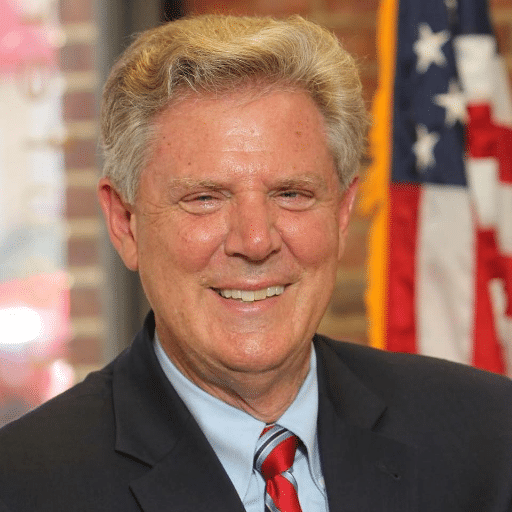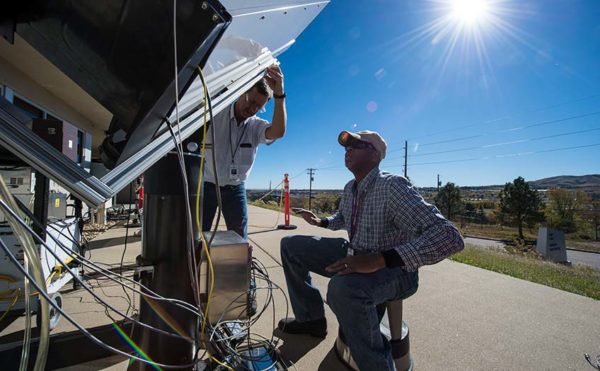Leaders from the U.S. House Committee on Energy and Commerce introduced the Climate Leadership and Environmental Action for our Nation's (CLEAN) Future Act. The legislation aims to decarbonize the country and establish a national 100% clean electricity standard (CES), among other proposals.
The legislation would authorize $565 billion over 10 years to achieve its goals. The bill sponsors said the legislation includes
"significant updates" to a draft released in January 2020, reflecting comments from stakeholders, expert testimony received in Committee hearings, and the enactment of several previous provisions into law through the Consolidated Appropriations Act, 2021.
The CLEAN Future Act would mandate net zero greenhouse gas (GHG) emissions no later than 2050, with an interim target of reducing GHG emissions 50% from 2005 levels no later than 2030. The targets come from the United Nations Intergovernmental Panel on Climate Change.
Energy and Commerce Committee Chairman Frank Pallone, Jr. (D-NJ) called climate change "one of the greatest challenges of our lifetime." He said the bill, which was introduced March 3, would create millions of "homegrown jobs" while ensuring the federal government does not "watch from the sidelines as the climate crisis wreaks havoc on Americans' health and homes."

Rep. Frank Pallone
Pallone, considered one of the gatekeepers of the Biden administration's energy agenda, introduced the bill with Environment and Climate Change Subcommittee Chairman Paul Tonko (D-NY) and Energy Subcommittee Chairman Bobby L. Rush (D-IL).
According to a summary from the sponsors, the CLEAN Future Act proposes new policies aimed at cutting GHG pollution in areas within the House committee's jurisdiction.
Specific sectors
Power sector: The CLEAN Future Act includes a nationwide CES requiring all retail electricity suppliers to obtain 100% clean electricity by 2035, in line with President Joe Biden's call to action for the power sector. The CES would mandate that all retail electricity suppliers provide an increasing supply of clean electricity to consumers starting in 2023, rising to 80% by 2030 and then 100% by 2035. The bill would invest in clean energy, distributed energy resources, grid infrastructure, and microgrids to help build resiliency and cut pollution. In addition, it would empower the federal government to expedite building out the transmission system to achieve clean energy goals.
Building sector: The bill aims to improve the efficiency of new and existing buildings, as well as the equipment and appliances that operate within them. It would establish national energy savings targets for continued improvement of model building energy codes, leading to a requirement of zero-energy-ready buildings by 2030. The bill also would set energy and water savings targets for federal buildings and provide funding for schools, homes, and municipal buildings to improve efficiency.

The bill also would update financing programs to expand domestic manufacturing of advanced automotive technologies.
Transportation sector: The bill targets transportation emissions, the largest source of GHG pollution, by building infrastructure to support a clean transportation system. The bill includes investments in transportation electrification, including grants and rebates to deploy electric vehicles and charging stations, zero-emissions school buses. It also would formally authorize a Clean Cities Coalition Program. The bill also would update financing programs to expand domestic manufacturing of advanced automotive technologies. It would establish a U.S. Environmental Protection Agency (EPA) grant program to decarbonize and electrify ports around the country, reducing air pollution that affect nearby communities.
Industrial sector: The bill would establish a Buy Clean Program that sets performance targets to reduce emissions from construction materials and products used in projects that receive federal funding. The bill incorporates new Climate Star labeling and provisions to ensure that performance targets adequately consider the complexities of manufacturing and procuring carbon-intensive products. With the majority of U.S. construction projects funded by government dollars, the program would aim to transform and strengthen the competitiveness of the U.S. manufacturing sector, while reducing emissions by promoting low-carbon materials and expanding the market for cleaner products.
Additional policies
A national climate target for federal agencies: In line with Biden's government-wide approach to fight climate change, the bill would direct all federal agencies to use existing authorities to put the country on a path toward a 50% reduction in GHG emissions from 2005 levels by no later than 2030, and to net zero no later than 2050. To ensure federal agencies' efforts remain on track, the legislation would direct the EPA to evaluate each agency's plans, make recommendations and report on progress each year, and establish a Clean Economy Federal Advisory Committee to review the plans.

States would have flexibility to develop plans to meet the 2050 and interim targets based on their own policy preferences, priorities, and circumstances.
State climate plans: The bill would empower states to complete the transition to a net-zero economy based on the federalism model in the existing Clean Air Act. States would have flexibility to develop plans to meet the 2050 and interim targets based on their own policy preferences, priorities, and circumstances. Each state would submit a climate plan to the EPA for its review and approval. To ensure that states have ample guidance and expertise at their disposal, the bill would direct the EPA to develop a set of model GHG control strategies states can choose to incorporate into their plans. The bill would authorize $200 million to help states prepare their plans.
Accelerator program: The bill would establish a Clean Energy and Sustainability Accelerator--modeled after the Green Bank model deployed across the U.S.--to help states, cities, communities, and companies transition to a clean economy. Capitalized with $100 billion in funding, the accelerator program would mobilize public and private investments to provide financing for low- and zero-emissions energy technologies, climate resiliency projects, building efficiency and electrification, industrial decarbonization, grid modernization, agriculture projects, clean transportation, and the development of state and local Green Banks where they do not yet exist. The bill would require that the program prioritize investments in communities that are disproportionately affected by the impacts of climate change and includes labor protections.

The bill also would create new programs to support dislocated workers and provide financial assistance to local governments.
Worker transition: The bill would establish an interagency framework to ensure workers and communities have federal-level support and resources during the nation's transition to net-zero climate pollution. It would create an Office of Energy and Economic Transition in the Executive Office of the President, responsible for managing a task force and stakeholder advisory committee to coordinate programs and activities that support impacted workers and communities. The bill also would create new programs to support dislocated workers and provide financial assistance to local governments, including by replacing lost revenue due to the closure of a major employer.
Environmental justice: The bill includes provisions designed to make environmental justice part of the mission of all federal agencies and to incorporate environmental justice considerations into laws. It includes investments to protect the health and safety of environmental justice communities, including lead service water line replacement, brownfield cleanups, and superfund cleanups. It further protects these groups by implementing new coal ash disposal requirements and repealing oil and gas production exemptions from landmark environmental laws.
The path forward
The CLEAN Future Act also features a suite of related policies, including proposals to reduce waste, remove barriers to clean energy, and reduce pollutants like methane. The legislation is the result of 27 hearings in the Energy and Commerce Committee on climate change over the last two years. Its introduction marks the beginning of the legislative process; hearings on the CLEAN Future Act will continue in the months ahead.
Bill text can be found here, and a section-by-section detail can be found here.

0 Comments
Recommended Comments
There are no comments to display.
Create an account or sign in to comment
You need to be a member in order to leave a comment
Create an account
Sign up for a new account in our community. It's easy!
Register a new accountSign in
Already have an account? Sign in here.
Sign In Now